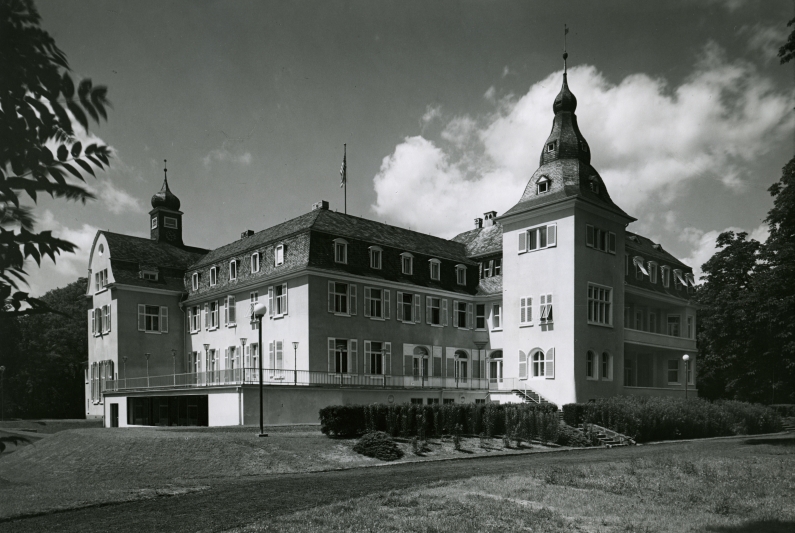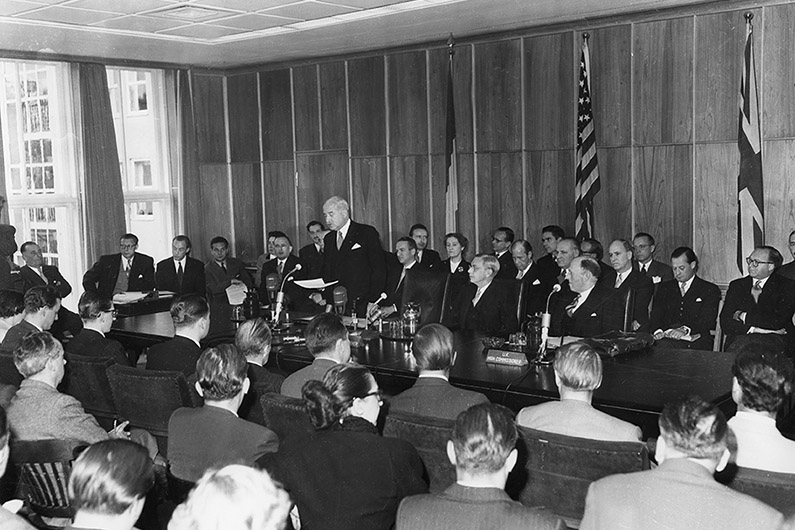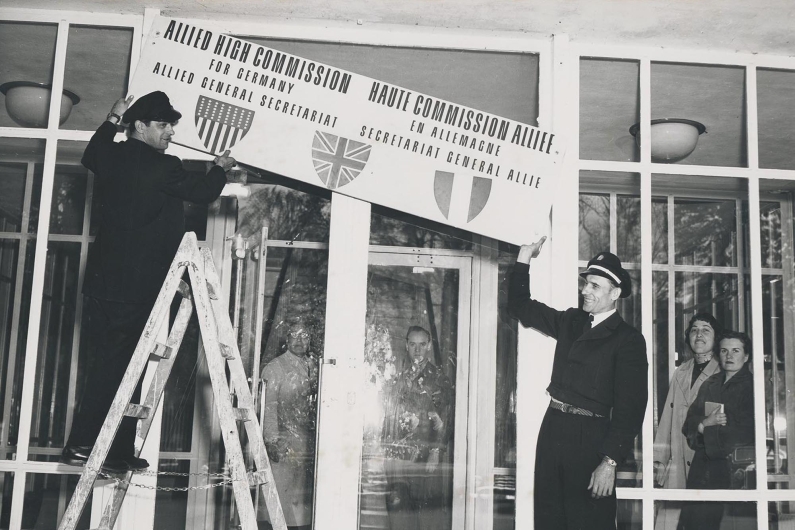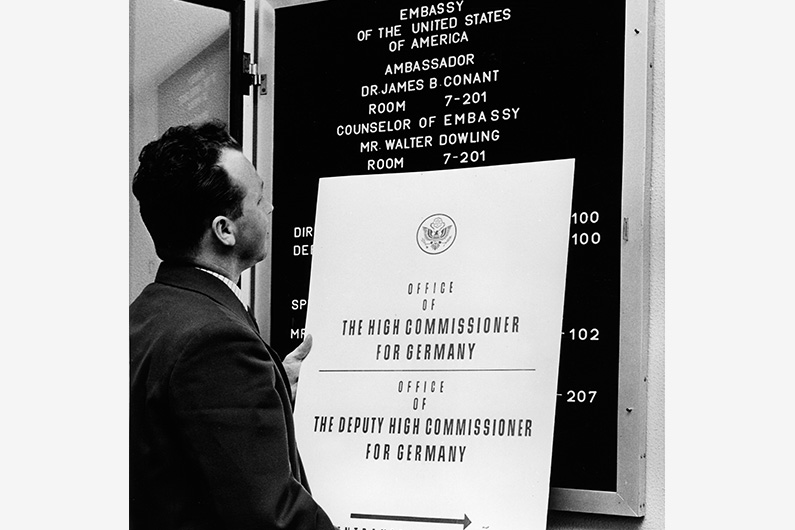Since the 1950s, Schloss Deichmannsaue in Mehlem has hardly changed from the outside, 2013.
Foto: Eckhard Henkel/Wikimedia Commons/CC BY-SA 3.0 DE
In 1951, a large building complex was added to the castle, 2019.
Stiftung Haus der Geschichte/Axel Thünker
In 1955, the Allied High Commission announed the repeal of the occupation statute for the Federal Republic in this part of the building, 2019.
Stiftung Haus der Geschichte/Axel Thünker
Deichmannsaue Castle became a place of political decisions about the future of Germany, 1949–1955.
Stadtarchiv und stadthistorische Bibliothek Bonn
The Allied High Commissioner of France, André François-Poncet, is speaking at the ceremony to repeal the occupation statute on 5 May 1955.
ullstein bild - dpa
The end of the Allied High Commission: Changing signs on 5 May 1955.
picture alliance/AP
The Allied High Commissioner of France, André François-Poncet, is speaking at the ceremony to repeal the occupation statute on 5 May 1955.
ullstein bild - dpa



